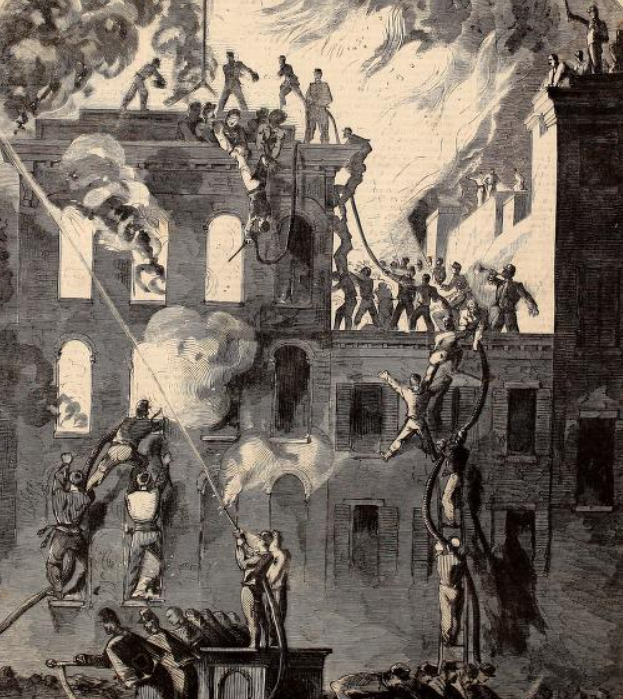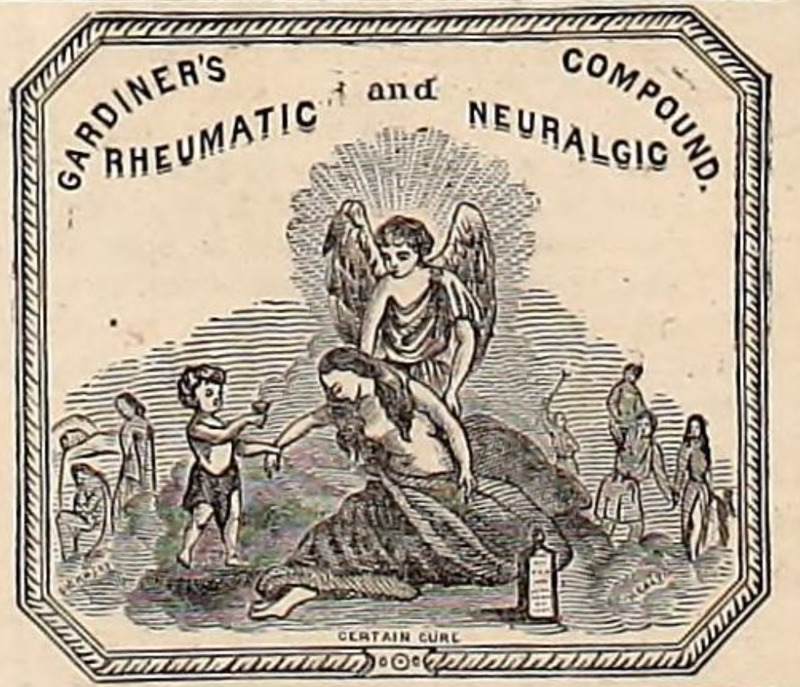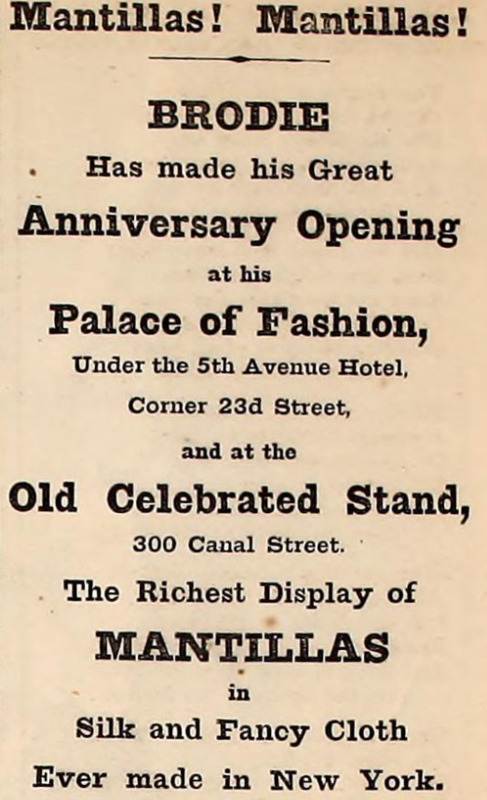Part 26
Introduction
The Harper’s Weekly magazine depicts the spectacle of Industrialization and changes within the society during the week of May 25, 1861, through illustrations and advertisements. In Harper's "Weekly" and the Spectacle of Industrialization by Gib Prettyman, he discusses how the magazine “combine[s] politics, education, and entertainment. It was through this interesting combination of motive impulses that the manifold spectacles of industrialization served as a major subject for Harper's Weekly” (26). Part 26 of Great Expectations by Charles Dickens reflects how illustrations and advertisements correlate with the current events of the period through the revelation of Provis and Compeyson’s past. Through the discussion of this past, Provis provides insight into the social hierarchy of class division, societal expectations, the corruption of the law, the effects of medicine, and the representation of mantillas. The illustrations and advertisements from Harper’s Weekly provide a spectacle of Industrialization and its impacts on society, early developments of modernization, and societal norms of the Victorian era, which all play a role in understanding the current events of the period and its correlation with the reading of Great Expectations.

Willard’s Hotel, Washington, Saved by the New York Fire Zouaves
The fire at Willard Hotel, Washington took place on May 9, 1861 (Harper’s Weekly 331). This illustration depicts Zouaves—who were soldiers of the volunteer regiments and served on the side of the North in the American Civil War from 1861-1865 ("Zouave, n.")—assisting the fire rescue efforts by creating a human pyramid due to the lack of ladders (Harper’s Weekly 331). Unlike the United States’ democratic government, England had a constitutional monarchy in the 1860s. This meant that their political system was predominantly in favour of the upper and middle classes. This human pyramid is representative of the social class of the Victorian period of England, which consisted of the upper class, middle class, and working class. In Great Expectations, Provis and Compeyson had social class distinctions. This social distinction reveals norms about the society of this period. For example, during the trial in court, Dickens writes about the social class distinction between Provis and Compeyson, which sets their characters apart. Compeyson’s lawyer compares Provis’ lower social status and criminal history to Compeyson’s good upbringing and gentility (Dickens 375). Douglas Hay states that “[m]uch class conflict found its locus in the courts” (73). R. Sindall provides evidence that “forces of the law were biased against the lower socio-economic groups” (32). Sindall presents information on how “the children of the upper classes were given stern warnings by adults for petty thefts for which members of the lower classes would be subject 'to imprisonment, even to transportation, a prison brand being affixed for life to the unfortunate children', and 'whatever moral delinquency exists in the higher and middle classes of society” (32).
In Great Expectations, Compeyson receives a lighter sentence in comparison to Provis “on account of good character,” which illustrates the corruption of the upper class and the flaws in the social class system (Dickens 375). For example, Provis tells Pip that Compeyson looks like a gentleman. Provis describes Compeyson's physical features: he has curly hair, black clothes, and a white pocket handkerchief (Dickens 374). Provis describes these features as ‘gentlemanly.’ To add to Compeyson’s ‘gentility,’ he had an education, schoolmates, and was part of a club which gave him credit as a gentleman (Dickens 375). Therefore, society sees Compeyson as having a “good character” who was with “bad company” (Dickens 375). On the other hand, Provis’ appearance is ungentlemanly as he does not have these features. Thereby, the trial was not in his favour. He says, “I noticed how heavy it all bore on me, and how light on him” (Dickens 374-375). Provis states that Compeyson’s sentence was light; whereas, he was “put in irons, brought to trial again, and sent for life” (Dickens 376). This line exemplifies the same reality that lower class individuals face as previously stated. Therefore, the trial between Provis and Compeyson reflected the bias of social class, which resulted in them having differing lengths of serving time.
Additionally, the shallow judgment based on appearance and connections that the lawyer made shows the corruption of the social class system. Gentility is often associated with the upper class or middle class, who have education and are in a higher rank than the working class. The industrialization led to more divisions within the social hierarchy through the increase in jobs, allowing a new middle class to be formed above the working class, Provis’s class. The lawyer looks highly upon upper and middle-class individuals, enabling his biased assumptions. However, Compeyson was a fraud who only acted the part of a gentleman. A few decades before the setting of the novel, individuals would not be able to move up the social class, but in Great Expectations, social mobility is possible. Thus, it was easy for Compeyson to play the part and get a lighter sentence; whereas, Provis lacks education and connections due to his harsher upbringing as society denies him opportunities.

Gardiner's Compound: Rheumatic and Neuralgic
The Gardiner’s Rheumatic and Neuralgic Compound is an advertisement for medicine related to rheumatic and neuralgic medical conditions. According to the Oxford English Dictionary, rheumatic refers to “the nature of or resembling rheumatism . . . [In medical terms, it is] designating any of a diverse group of diseases, often of inflammatory or autoimmune origin, which affect[s] the joints, muscles, or, more generally, connective tissue, and which form the subject matter of rheumatology.” (“rheumatic, adj. and n.”). Neuralgic refers to a “characteristic of neuralgia” ("neuralgic, adj."). Neuralgia is “[p]ain, typically stabbing or burning, in the area served by a nerve” ("neuralgia, n."). The purpose of this drug is to restore the health of the individual. This advertisement reflects the spectacle of industrialization through the modernization of medicine for painkillers and relievers. Between the two, the most important is the neuralgic compound. In fact, hallucinations occur because of the “use of a variety of drugs or hallucinogenic substances” (Branchey et al. 1168). To add on, the “[s]erotonergic, dopaminergic, and noradrenergic pathways have all been implicated” (Branchey et al. 1168). Alcohol contains high levels of serotonin, which means that the individual becomes more relaxed with alcohol. However, abusing alcohol can cause hallucinations as well (Branchey et al. 1168). This is known as alcohol hallucinosis which can give visual or auditory hallucinations (Branchey et al. 1168). In Great Expectations, Arthur hallucinates about Miss Havisham coming to kill him. While there is no evidence of Arthur taking medication, it is noted that Sally gives him alcohol to calm him down (Dickens 373). While the alcohol may have calmed his nerves, abuse of alcohol will also cause hallucinations. This fits with Arthur’s last moments because he says “Why look at her! . . . She's a shaking the shroud at me! Don’t you see her?” (Dickens 373). Neither Compeyson, Sally, or Provis saw her, but Arthur did. While the purpose of the advertisement is to restore the health of an individual, the neuralgic compounds linked to alcohol prove it to be unsafe. The illustration shows an angel helping an ill woman. While the image suggests that the drug is helpful and showcases a hint of the societal belief in the medicine, Arthur’s case changes the narrative to symbolize an angel taking an ill woman to her end.

Mantilla
This advertisement promotes mantillas, which are veils worn over the head and covers the shoulders ("mantilla, n."). Mantillas are typically black because they are used for mass services. However, white mantillas can be worn in weddings. The display of silk and fancy cloth in the advertisement reflects the increase in machinery which rapidly produced clothing during the industrialization. In Great Expectations, this connects to Miss Havisham’s attire. Arthur hallucinates seeing Miss Havisham where he describes what she wears. He says, “She’s all in white . . . white flowers in her hair . . . and she’s got a shroud hanging over her arm, and she says she’ll put it on me at five in the morning” (Dickens 373). Firstly, Miss Havisham wears white because it is representative of her wedding dress. She was supposed to marry Compeyson, who did not show up to the wedding. The white is also symbolic of her purity. At the same time, it is a symbolism of hope which Miss Havisham instills through her desire to couple Pip and Estella. However, rather than buying a new dress in an increasingly industrialized world, Miss Havisham’s attachment and overuse of the dress soon becomes a symbol of death. Therefore, Miss Havisham’s hallucinatory appearance in front of Arthur served as a symbol of death, which then foreshadowed his death and her own.

Wedding Cards
The advertisement promotes wedding cards in New York. This reminds me of Compeyson’s relationship with his wife, Sally. Aycan Gökçek offers an explanation on the role of Victorian women. Gökçek notes that the perfect wife is a “kind, considerate, self-sacrificing, and sensible, so pure hearted as to be utterly ignorant of averse to any sensual indulgence, but so unselfishly attached to the man she loves as to be willing to give up her own wishes and feelings for his sake” (145). Provis notes that Compeyson is abusive towards Sally. For example, he usually kicks her (Dickens 372). Despite the abuse Sally receives from him, she continues to stay with him and listens to his demands obediently. In fact, when Arthur hallucinates about Miss Havisham, she takes “pity on him” for his outrageous imaginations (Dickens 372). Provis says, “Compeyson’s wife, being used to [Arthur], giv him some liquor to get the horrors off, and by-and-by he quieted” (Dickens 373). Although Arthur is not married to Sally, she still takes care of him and has clearly encountered this behaviour from him before. Moreover, Provis does not mention whether or not Sally knows that Compeyson was committing an affair on her by being engaged to Miss Havisham for money. Although he never intended to go through with it, being engaged to Miss Havisham whilst being already married to Sally is infidelity. Whether or not she knows, the Victorian era’s lack of human rights is another factor. Due to the lack of rights, the abuse she receives from Compeyson would be considered normal in her everyday life. Therefore, Sally upholds the role of a nineteenth century woman but does so without realizing that she is in an abusive relationship due to the laws of this time.
Conclusion
The news and advertisements of the May 25, 1861 issue shows that the story aligns with many of the current events of the time period through the spectacle of industrialization and its effects on society, developments of modernization, and societal norms of the Victorian era. The revelation of Provis and Compeyson’s past provides context into the social hierarchy and experiences they face. This discussion of the past teaches modern readers about the injustices of the court, law, and the working class. These political changes from Industrialization demonstrate the struggles of different social classes in the 1860s. Societal expectations provide insight into the norms of the 1860’s period. Although not very different modernly, women are now more independent than they were before because of the developments of industrialization allowing more women to work. The medicines of the time show the development of medical practices to make them what they are today. While medicine was more accessible back then (as seen through advertisements in magazines), prescriptions must be obtained from doctors after being diagnosed modernly. Lastly, the representation of mantillas align with the story’s content and the rise in machinery. While not directly, it provides context of the religious values integrated into society and marriage in an increasingly industrialized world with early modern developments. The illustrations and advertisements from the Harper’s Weekly pays attention to societal and cultural impact of the Industrial and Victorian changes in the analysis of Great Expectations.
Works Cited
Branchey, L., et al. “Association Between Amino Acid Alterations and Hallucinations in Alcoholic Patients.”
Biological Psychiatry (1969), vol. 20, no. 11, 1985, pp. 1167–73,
https://doi.org/10.1016/0006-3223(85)90175-1.
Dickens, Charles. Great Expectations, edited by Graham Law e. al, Broadview Press, 1998.
Gökçek, Aycan. “Social Position of Victorian Women: Villette and Emma.” Comparative Literature--East &
West, vol. 4, no. 2, 2020, pp. 143–55, https://doi.org/10.1080/25723618.2021.1876970.
Hay, Douglas. “Crime and Justice in Eighteenth- and Nineteenth-Century England.” Crime and Justice
(Chicago, Ill.), vol. 2, 1980, pp. 45–84, https://doi.org/10.1086/449067.
"mantilla, n." OED Online, Oxford University Press, March 2023, www.oed.com/view/Entry/113705.
Accessed 2 April 2023.
"neuralgia, n." OED Online, Oxford University Press, March 2023, www.oed.com/view/Entry/126356.
Accessed 1 April 2023.
"neuralgic, adj." OED Online, Oxford University Press, March 2023, www.oed.com/view/Entry/126357.
Accessed 1 April 2023.
Prettyman, Gib. “Harper’s ‘Weekly’ and the Spectacle of Industrialization.” American Periodicals, vol. 11, 2001, pp.
24–48.
"rheumatic, adj. and n." OED Online, Oxford University Press, March 2023,
www.oed.com/view/Entry/165196. Accessed 1 April 2023.
Sindall, R. S. “The Criminal Statistics of Nineteenth-Century Cities: a New Approach.” Urban History, vol.
13, 1986, pp. 28–36, https://doi.org/10.1017/S0963926800007987.
"Zouave, n." OED Online, Oxford University Press, March 2023, www.
http://www.oed.com/view/Entry/233088. Accessed 29 March 2023.